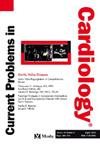重新审视2型心肌梗死:未满足的临床需求。
IF 3.3
3区 医学
Q2 CARDIAC & CARDIOVASCULAR SYSTEMS
引用次数: 0
摘要
心血管疾病是世界范围内最常见的死亡和发病原因,急性冠状动脉综合征(ACS)往往是第一个临床表现。目前,急性心肌梗死(AMI)的诊断是基于心肌梗死(MI)的第四种通用定义,并根据其病理生理背景划分了不同的亚型。1型心肌梗死(T1MI)被定义为急性冠状动脉事件,伴有斑块破裂和随后的动脉粥样硬化血栓形成,而2型心肌梗死(T2MI)被定义为由氧气需求和供应失衡引起的事件,与急性冠状动脉粥样硬化血栓形成无关。区分这两个实体是至关重要的,因为T1MI受益于针对心肌再灌注的早期侵入性方法,而在T2MI中,重点关注缺血失配的原因是至关重要的。此外,T2MI通常与较差的预后相关。冠状动脉疾病(CAD)的存在和严重程度可能会显著影响缺血阈值和T2MI的风险,因为它已被确定为心血管死亡和复发性心肌梗死的独立预测因子。争论的关键点是确定冠心病在T2MI中的存在,以确定适合再灌注策略的患者,并定制治疗和二级预防策略。在这篇叙述性综述中,我们旨在强调T1MI和T2MI在临床特征、影像学和生物标志物方面的差异,强调CAD在完善T2MI诊断治疗算法中的作用。本文章由计算机程序翻译,如有差异,请以英文原文为准。

Revisiting type 2 myocardial infarction: Unmet clinical needs
Cardiovascular disease is the most common cause of mortality and morbidity worldwide and acute coronary syndrome (ACS) is often the first clinical manifestation. Currently, the diagnosis of acute myocardial infarction (AMI) is based on the fourth universal definition of myocardial infarction (MI), with different subtypes based on their pathophysiological background. While type 1 myocardial infarction (T1MI) is defined by an acute coronary event with plaque disruption and consequent athero-thrombosis, type 2 myocardial infarction (T2MI) is defined as an event due to oxygen demand and supply imbalance, unrelated to acute coronary athero-thrombosis. The differentiation between these two entities is crucial since T1MI benefits from an early invasive approach aimed at myocardial reperfusion, while in T2MI it is critical to focus on the cause of the ischemia mismatch. Furthermore, T2MI is often associated with a poorer prognosis. The presence and severity of coronary artery disease (CAD) may significantly influence the ischemic threshold and the risk of T2MI, as it has been identified as an independent predictor of cardiovascular death and recurrent MI. The key point of contention is determining the presence of CAD in T2MI to identify patients eligible for a reperfusion strategy and to tailor therapy as well as secondary prevention strategies.
In this narrative review, we aim to highlight the differences in clinical features, imaging, and biomarkers between T1MI and T2MI, emphasizing the role of CAD, in refining the diagnostic-therapeutic algorithm in T2MI.
求助全文
通过发布文献求助,成功后即可免费获取论文全文。
去求助
来源期刊

Current Problems in Cardiology
医学-心血管系统
CiteScore
4.80
自引率
2.40%
发文量
392
审稿时长
6 days
期刊介绍:
Under the editorial leadership of noted cardiologist Dr. Hector O. Ventura, Current Problems in Cardiology provides focused, comprehensive coverage of important clinical topics in cardiology. Each monthly issues, addresses a selected clinical problem or condition, including pathophysiology, invasive and noninvasive diagnosis, drug therapy, surgical management, and rehabilitation; or explores the clinical applications of a diagnostic modality or a particular category of drugs. Critical commentary from the distinguished editorial board accompanies each monograph, providing readers with additional insights. An extensive bibliography in each issue saves hours of library research.
 求助内容:
求助内容: 应助结果提醒方式:
应助结果提醒方式:


